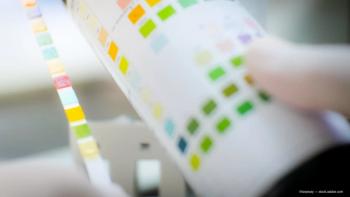
Macular OCT assists preop cataract surgery evaluation
Study shows routine use may improve patient management, guide procedure planning
In a retrospective study, preoperative macular OCT identified macular pathology overlooked on fundus examination, and the findings led to management changes in a large percentage of patients.
Reviewed by Yishay Weill, MD
Results of a retrospective study support the routine use of macular
It found that the macular OCT was normal in 51% of eyes and uninterpretable due to low quality in 9%. However, macular pathology was identified in 40% of the eyes. Importantly, the pathology was overlooked in the referral examination in 51% of the eyes with pathology, and its presence led to a change in management in 14% of patients.
“Cataract surgery is now a combined rehabilitative and refractive procedure, and our patients’ expectations are higher than ever,” said Dr. Weill, resident, Department of Ophthalmology, Shaare Zedek Medical Center. Dr. Weill noted that the dilated clinical fundus examination is currently considered the standard of care for preoperative evaluation of the macula.
“Its limited ability to detect pathology in patients with opaque media is a specific concern in the setting of patients presenting for cataract surgery,” he pointed out.
Dr. Weill also explained that overlooked macular pathologies might lead to suboptimal postoperative results, such as unexpected low BCVA and worsening of baseline macular pathology, and that will in turn could lead to dissatisfied patients.
RELATED:
The 226 patients included in the research study had a mean age of 73 years, were predominantly female (57%), and were seen by their referring eye care practitioner at an average of 59 days before their preoperative OCT.
The macular OCT was performed with a spectral-domain system (
“All patients found to have macular pathologies were disqualified as candidates for a multifocal IOL,” said Dr. Weill. In some patients, discovering overlooked macular pathology using OCT led to a delay in surgery, and an offering of combined surgery to address the macular pathology and cataract, or use of adjunctive therapy, such as an intravitreal injection of a corticosteroid or
Dr. Weill also pointed out that preoperative macular OCT is easy to implement because it is widely available, non-invasive, and quick. However, he concluded that the need for research to evaluate the cost-effectiveness of its routine use for preoperative evaluation of cataract surgery patients.
Disclosures:
Yishay Weil, MD
E: [email protected]
This article is adopted from a presentation by Dr. Weill at AAO2018. He has no relevant financial interests to disclose.
Newsletter
Get the essential updates shaping the future of pharma manufacturing and compliance—subscribe today to Pharmaceutical Technology and never miss a breakthrough.













































